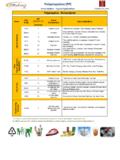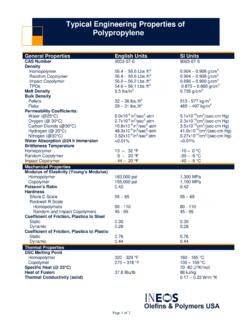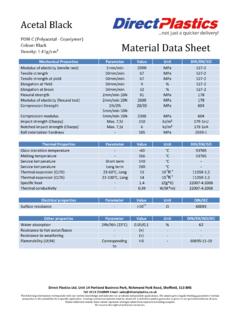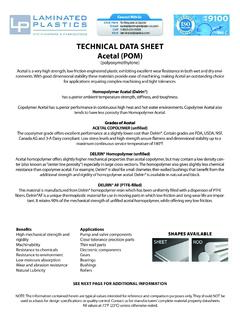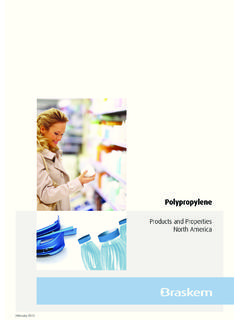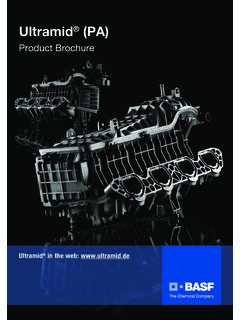Transcription of Personal Protective Equipment (PPE)
1 Personal Protective Equipment (PPE) Environmental Health & Safety1 Objectives Know when PPE is necessary Know what PPE is necessary Know how to properly don, doff, adjust, and wear PPE Know the limitations of PPE Know the useful lifespan of PPE Know how to properly care, maintain, and dispose of PPET histrainingcoversthe general objectives listed above. Supervisors areresponsibleforadditionalin-person training asneededtoensurethat their employeesunderstandthePPE requirements specific to their position. 2 What is PPE? PPE is a type of control method that reduces employee exposure to hazards when engineering and administrative controls are not feasible or effective in reducing these exposures to acceptable levels , aprons, gloves, respirators, ear plugs If PPE is used, a PPE program should be implemented that explains: The hazards present The selection, maintenance, and use of PPE The training of employees Monitoring of the PPE program3 Hierarchy of Controls PPE should be the last line of defense against hazards in the work place Behind engineering controls and administrative controls.
2 Engineering Controls Eliminate or reduce exposure to a hazard through the use of substitution of engineered machinery or Equipment Administrative Controls Changes in work procedures with the goal or reducing duration, frequency, and severity of the hazard4 When is PPE Necessary? Your employer is responsible for conducting a hazard assessment of the workplace and all tasks involved to identify all hazards that exist in the workplace Your employer will then determine what PPE is necessary for either entry into the facility or for a designed task within the facility to ensure employee safety5 Employer Responsibilities Perform a hazard assessment Train employees on the proper use of PPE Retrain when and if necessary Document and recordkeeping of all training sessions6 Employee Responsibilities Wear the designated PPE Always inspect PPE for damage before each use Inform your supervisor when PPE is defective, damaged, or doesn t fit Store and care for PPE properly7 Selecting Your PPE When choosing your PPE, you should keep the following in mind.
3 Make sure the PPE fits correctly Not too big or too small Make sure the PPE is comfortable to wear You may not use your own custom PPE unless it has been approved by the American National Standards Institute (ANSI) and your supervisor8 Eye and face protection9 Eye and Face Protection Hazards Eye and face protection items are intended to protect the employee from a number of hazards determined from the hazard assessment. These hazards include: impact flying objects such as large chips, fragments, particles, sand, and dirt Heat-anything emitting extreme heat Chemicals splash, fumes, vapors, and irritating mists Dust harmful dust Optical Radiation radiant energy, glare, and intense light10 Safety Spectacles Safety spectacles are intended to shield the wearer s eyes from impact hazards You are required to use safety spectacles with side shields when there is a hazard from flying objects. Non-side shield safety spectacles are not acceptable eye protection for impact hazards11 Safety Spectacles Lenses and FramesLenses Plano Lenses Should be used by workers who do not require vision correction May be flat or curved Are available in clear, filtered, or tinted lenses May include removable lenses Prescription Lenses Should be used by workers who require vision correction May be clear, filtered, or tinted May include removable lensesFrames Spatula temples Fit over the ear Can be either fixed or adjustable Are available in plastic or metal Cable temples Fit around the ear Can be either fixed or adjustable Are available in plastic or metal Headband temples Are easily adjustable for a secure fit Are useful for tasks requiring movement12 Safety Spectacle Side Shields Side shields provide angular protection from impact hazards in addition to frontal protection Flatfold or semi side shields.
4 May be part of or attached to the temple Are permanent or removable Are solid or ventilated Are tinted or clear Full (cup) side shields may be: Removable Wire screen Tinted or clear13 Safety Goggles Safety goggles are intended to shield the wearer s eyes from impact hazards They fit the face immediately surrounding the eyes and form a Protective seal around the eyes Are available in clear lenses Are available with removable lenses May incorporate prescription lenses Do not provide special protection against optical radiation14 Safety Goggles Frames and VentilationFrames Eyecup goggles Cover the eye sockets completely Are available with direct or indirect ventilation May be rigid or flexible Cover goggles May be worn over corrective spectacles without disturbing the adjustment of the spectacles Are available in direct, indirect, and non-ventilated types May be rigid or flexibleVentilation Direct ventilation Resist direct passage of large particles into the goggle Prevent fogging by allowing air circulation Indirect ventilation Prevent fogging by allowing air circulation Protect against liquid or chemical splash entry Non-ventilated Do not allow the passage of air into the goggle Prevent splash entry May fog and require frequent lens cleaning15 Face Shields Face shields are intended to protect the entire face or portions of it from impact hazards Must use in combination with safety goggles or spectacles When worn alone, face shields DO NOTprotect employees from impact hazards (flying objects)
5 16 Face Shield Windows Face shield windows extend from the brow to below the chin and across the entire width of the face They are available in both removable and lift-front designs Removable windows allow the replacement of damaged windows Plastic windows Protect against light impact May include a glass insert Are available clear or filtered Wire-screen windows May include a plastic/glass insert Protect against moderate impact Are not recommended for use involving chemical hazards17 Face Shield Headgear Headgear supports the window shield and secures the device to the head Adjustable headgear includes straps that allow the user to manipulate the size of the headgear to ensure a proper fit Hard hats with face shields may have a window shield mounted under the visor of the hat18 Limitations Safety spectacles are used mainly to protect the eyes from injury from flying objects Safety goggles are used to protect the eyes from impact and chemical hazards. Non-ventilated goggles may require frequent lens cleaning due to fogging Face shields are secondary protectors only and must be worn with safety spectacles or goggles19 How to Don and Doff Eye & Face ProtectionDon (Put On) Position goggles over eyes and secure to head using the ear pieces or headband Position face shield over face and secure to brow with headband Adjust to fit comfortableDoff (Take off) Grasp ear or head pieces Lift away from face20 Hand protection21 Hand Protection Hand protection PPE is used to prevent potential injuries from hazards such as.
6 Skin absorption of hazardous substances chemical or thermal burns electrical hazards bruises, abrasions, and cuts punctures, fractures, and amputations Some examples of hand protection items Gloves Finger guards Arm coverings22 Selection of Protective Gloves There are many different type of Protective gloves to choose from Different factors will determine which type of glove you will need to use Always use a type of glove specifically designed for the hazard Factors to keep in mind: Types of chemicals handled Nature of contact Duration of contact Grip requirements Thermal protection Abrasion/resistance requirements Size and comfort23 Leather, Canvas, or Metal Mesh Gloves Leather Gloves Protect against sparks, moderate heat, blows, chips, and rough objects Aluminized Gloves Provide reflective and insulating protection against heat and require an insert made of synthetic materials to protect against heat & cold Aramid Fiber Gloves Protect against heat & cold, are cut and abrasive-resistant and wear well Synthetic Gloves Offer protection against heat & cold, are cut and abrasive resistant, and may withstand some diluted acids.
7 These materials do not stand up against alkalis and & Coated Fabric Gloves Fabric Gloves Protect against dirt, slivers, chafing, and abrasions. They do not provide sufficient protection for use with rough, sharp, or heavy materials. Coated Fabric Gloves Normally made from cotton flannel with napping on one side. By coating the unnapped side with plastic, fabric gloves are transformed into general-purpose hand protection offering slip-resistant and Liquid Resistant Gloves Chemical-resistant gloves can be made of a number of synthetic rubbers or various kinds of plastic Typically the thicker the material of the glove is, the greater the chemical resistance However, a thicker glove may decrease grip and dexterity for the user You should always choose a type of glove that protects against the chemical you will be handling Refer to a glove selection chart or a Safety Data Sheet (SDS) of the chemical you will be handling26 Types of Chemical-Resistant Gloves Butyl Gloves are made of a synthetic rubber and protect against a wide variety of chemicals Work well with: peroxides, corrosive acids, strong bases, alcohols, aldehydes, ketones, esters, and nitro compounds Work poorly with.
8 Aliphatic or aromatic hydrocarbons and halogenated solvents27 Types of Chemical-Resistant Gloves Natural (latex) Rubber Gloves one of the most popular gloves used thanks to their comfort, tensile strength, elasticity, and temperature resistance Work well with: water solutions of acids, alkalis, salts, and ketones Some people may be allergic to the latex found in these gloves and may need to find hypoallergenic gloves28 Types of Chemical-Resistant Gloves Neoprene Gloves made of a synthetic rubber that has a greater chemical and wear resistance that natural rubber Work well with: hydraulic fluids, gasoline, alcohols, organic acids, and alkalis29 Types of Chemical-Resistant Gloves Nitrile Gloves made of a copolymer that can stand up to heavy use even after prolonged exposure to substances that cause other gloves to deteriorate Work well with: oils, greases, acids, caustics, and alcohols Work poorly with: strong oxidizing agents, aromatic solvents, ketones, and acetates30 Types of Gloves31 How to Don and Doff Hand ProtectionDon (Put On) Open glove at the cuff and extend opposite hand into glove Once the hand is properly aligned in the glove, move fingers down into the glove s fingers Roll the cuff of the glove down the wrist until the glove is secureDoff (Take off) Pull the glove from above the cuff upwards on the hand inside out to trap potential contaminants inside the used glove Place the used glove into the palm of the opposite hand (which remains gloved) Repeat on opposite hand32 How to Don and Doff Hand Protection33 Limitations Gloves should be visually inspected before each use Look for punctures, cuts, discolor, and stiffness of the material Any gloves that have damage should be immediately discarded and replaced Reusing chemical-resistant gloves should be very carefully evaluated34 Safe and Healthy Buckeyes 35


